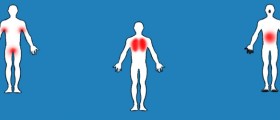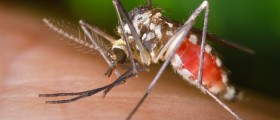
Bubonic plague is a severe infectious disease caused by the bacterium Yersinia pestis. This microorganism is transmitted to humans via the bites of infected fleas or rodents. The disease is rarely, almost never, transmitted from an infected individual to another human being.
Bubonic plague is only one form of plague characterized by lymph nodes enlargement due to infective agents that enter the body through the skin. Other two forms of the disease are pneumonic plague and septicemic plague.
Bubonic Plague Causes and Risk Factors
Yersinia pestis is a bacterium that is frequently found in rodents, especially rats. Rat fleas feed on the infected blood of these animals, and if a person is bitten by the fleas carrying the microorganism, the infection soon develops. Apart from being transmitted via flea bites, direct bite of the infected animal (e.g. infected rat) is another way of contracting the disease. Rarely, Yersinia pestis may contaminate clothing or other materials used by an infected person and can be transmitted via these items. This is only possible if one has some cracks or openings on the skin and in case bacteria come into direct contact with these.
Bubonic Plague Clinical Characteristics
Symptoms of bubonic plague develop approximately 6 days after exposure to the bacteria. In order to confirm the illness doctor must rule out other conditions which cause similar symptoms and signs.
After contracting the bacteria, they reach regional lymph nodes where they start to multiply. Patients typically complain about general ill feeling, high fever accompanied by chills, muscle pain and severe headache. Some people may develop seizures and all of them have smooth, painful lymph gland swelling. Even though swelling most commonly affects the groin area, lymph glands in the armpits and neck may also enlarge.
Bubonic Plague Prevention
Prevention against this infectious disease must be very carefully organized in areas of the world where the condition is endemic. The program should comprise public health education, environmental management and finally, preventive drug therapy.
Public health education is essential for regions where the bacteria is widespread. This preventive approach includes information regarding eliminating food and shelters for rodents which are close to homes, work places and recreational areas, surveillance for plague activity among rodent population by professional public health workers (e.g. reporting sick or dead rodents), appropriate/licensed insecticides which eradicate flea during plague outbreaks and proper treatment of pets suffering from fleas.
The goal of environmental management is to control rat population in urban and rural areas.
And finally, people who have been exposed to flea bites of wild rodents, especially if this has happened during an outbreak of plague are prescribed antibiotics (tetracyclines, chloramphenicol or some sulfonamides) in order to kill bacteria prior they start to multiply.

















Your thoughts on this
Loading...